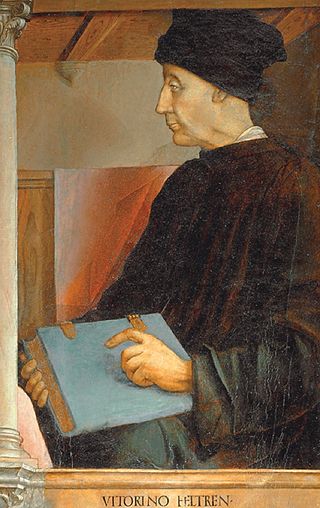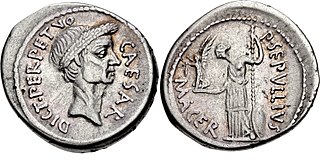
Amiternum was an ancient Sabine city, then Roman city and later bishopric and Latin Catholic titular see in the central Abruzzo region of modern Italy, located 9 km (5.6 mi) from L'Aquila. Amiternum was the birthplace of the historian Sallust.

Vittorino Veronese was an Italian anti-fascist lawyer and activist who served as UNESCO’s Director-General from 1958 to 1961. Before his appointment as UNESCO’s Director-General he served as Chairman of the Catholic Institute for Social Activity and of Azione Cattolica. From 1952 to 1956 he served on UNESCO’s board and was UNESCO’s chairperson from 1956 to 1958. Three years after the appointment as the Director-General, Veronese had to resign due to health concerns.

Vittorino da Feltre was an Italian humanist and teacher. He was born in Feltre, Belluno, Republic of Venice and died in Mantua. His real name was Vittorino Rambaldoni. It was in Vittorino that the Renaissance idea of the complete man, or l'uomo universale — health of body, strength of character, wealth of mind — reached its first formulation.

Capriate San Gervasio is a town and comune in the province of Bergamo, in Lombardy, northern Italy. As of 2019, its population was 8,216.

Dictator perpetuo, also called dictator in perpetuum, was the office held by Julius Caesar just before the end of his life. He was granted the title between 26 January and 15 February during the year 44 BC, shortly before his assassination on 15 March. By abandoning the time restrictions of the regular Roman dictatorship, it elevated Caesar's to a rank more akin to the ancient Roman kings.
Pioraco is a comune (municipality) in the Province of Macerata in the Italian region Marche, located about 60 kilometres (37 mi) southwest of Ancona and about 40 kilometres (25 mi) southwest of Macerata.

Gianfrancesco I Gonzaga was Captain of the People from 1407 to 1433 and Marquis of Mantua from 1433 to 1444. He was also a condottiere.

The Diocese of Tilarán-Liberia is a Latin Church ecclesiastical territory or diocese of the Catholic Church in Costa Rica. It is a suffragan diocese in the ecclesiastical province of the metropolitan Archdiocese of San José de Costa Rica. It was erected as a diocese on 22 July 1961.
The Social Democratic Rebirth, whose complete name is Movement of Social Democratic Rebirth, is a social democracy minor political party in Italy.
Saints Severinus of Sanseverino and Victorinus of Camerino were brothers who were both bishops and hermits of the 6th century.

Saint Cetteus is the patron saint of Pescara. He was a bishop of the 6th century, elected to the see of Amiternum in Sabina in 590, during the pontificate of Gregory the Great.
Battista Malatesta, also known as Battista di Montefeltro, forename also called Baptista, was an Italian Renaissance poet.
Gregorio Correr (Corraro) was an Italian humanist and ecclesiastic from Venice. In the last year of his life he was elected Patriarch of Venice.
The Congregation of the Oblate Sisters of the Virgin Mary of Fatima (O.M.V.F.) is a Catholic religious institute of women of pontifical right founded in northern Italy on 13 May 1978. It gained pontifical status on 31 May 2001.

Roba da ricchi is a 1987 Italian anthology comedy film directed by Sergio Corbucci. It consists of three segments, all set in Monte Carlo.

Iacopo da San Cassiano, also known as Iacobus Cremonensis, was an Italian humanist and mathematician. He translated from Greek to Latin the writings of Archimedes and parts of Diodorus' Bibliotheca historica.

The Abbey of St. Peter is a Benedictine abbey in Assisi inhabited by a small community of monks belonging to the Cassinese Congregation. The monastery has supported a hospital for the sick, an agricultural colony, and an orphanage run by the Stigmata Sisters.

Vittorino Colombo was an Italian politician.
Vittorino Milanesio is a former Italian sprinter who competed at the 1976 Summer Olympics.
Casa Gioiosa or The House of Joy was a 15th century house in Mantua, Italy, owned by the Gonzaga family where the Italian pedagogue Vittorino da Feltre in 1423, set up a humanist school. The Casa Gioiosa, was a pioneering educational institution that aimed to provide a holistic and humanistic education to its students and soon became a model for Renaissance education, influencing educational practices throughout Europe. It emphasized the ideals of humanism and the importance of education in fostering personal growth and civic responsibility.













